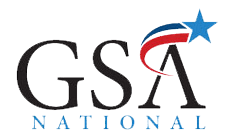

Employers who have contracts with the federal government that are subject to the Service Contract Act (SCA) must meet the wage and benefit provisions of the contract’s Wage Determination (WD).
There are multiple ways in which a federal contractor can meet the Fringe Health & Welfare Obligation:

It is common for contractors to utilize a combination of these methods to meet their fringe obligation. However, the practice of paying Cash-in-Lieu of qualied benefits has several adverse outcomes:
Signicant savings in payroll taxes and related items by allocating H&W to benefits vs. paycheck:
The payroll tax burden on employers can be over 20%. The added payroll burden translates to higher costs, affecting the profitability of the contract or the competitiveness of the bid.
Employee retention is better with benefits:
Providing a comprehensive benefit package sends a clear message to your employees that they are a valued member of your company. That message easily translates into higher productivity, as well as higher morale.
Paying Cash-in-Lieu instead of providing employer-paid health insurance, while counting these amounts as employer contributions to medical coverage, exposes employers to significant penalties under the Affordable Care Act (ACA):
ACA has penalties for not offering affordable health insurance. The fines can be over $2,200 per employee.
Contract Awards:
When the government reviews contractor proposals, price is often not the only factor. They also often factor in employee benefit quality into their decision. Contractors that offer quality benefit packages to their SCA employees are more likely to be awarded the contract.
Established benefit trusts can include additional cost-saving features:
Employee benefit trusts for SCA employees often contain elements, such as individual Premium Reserve Accounts or forfeitures provisions, that enable employers to provide more benefits to employees for less. Additionally, the contractor can outsource the hourly H& W accounting to a Third-Party Administrator that specializes in managing SCA fringe benefit compliance. These and other expenses can be paid for by the health and welfare dollars, translating into even more significant cost savings for the contractor.
A Trust is the most effective and efficient method used to meet the SCA H&W obligation. The Trust is established as an irrevocable, tax-exempt trust, for the benefit of the contractor’s employees, and may be used to fund any number of Plans. This meets the strict definition of a “bonafide” plan, as set forth in 29CFR. Thus, as soon as the contractor deposits its H&W contributions into the Trust, the contractor has met its obligation under SCA. The trust model can be utilized in several ways to ensure regulatory compliance and cost efficiencies. Below is a typical approach:
The contractor’s H&W contributions are deposited into the Trust each month. Credits may be applied before deposit for any eligible direct paid benefits such as sick pay, 401k match, etc. H&W contributions are allocated to individual employee Premium Reserve Accounts (PRA). All other benefit costs, including insured premiums, self-funded claims, etc., are then deducted from PRAs and paid out of the Trust by GSA National, the plan administrator. Any H&W funds deposited in excess of the cost of benefits remain in employee PRAs and are available for future use in times of unpaid leave, site shutdown, etc.
Since proper record keeping is paramount in SCA compliance, records that adequately segregate not only SCA from non-SCA employees but also SCA employees by contract becomes extremely important. The Department of Labor presumes that all period of performance and are subject to the SCA unless the contractor can show otherwise. Since the burden of proof is on the contractor, it is incumbent upon the contractor to keep adequate records. GSA maintains these records and provides the contractor with monthly updated reports. GSA is also available to work through the reports with the DoL should that be necessary.
In summary, the contractor can remain in compliance with the SCA, competitive in the marketplace, and profitable for its shareholders by instituting proper fringe-dollar projections and reconciliation processes.
Contact one of our SCA subject matter specialists today to learn how GSA National’s trust solution could be right for your compliance model. 1-800-250-2741 ext. 172, or email us at Solutions@GSANational.com!